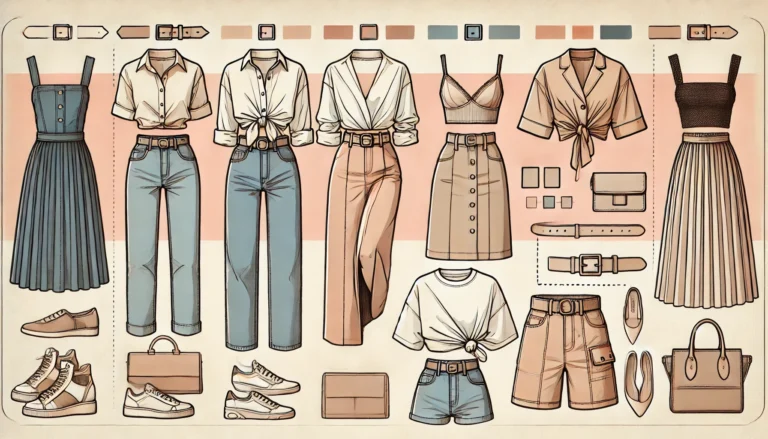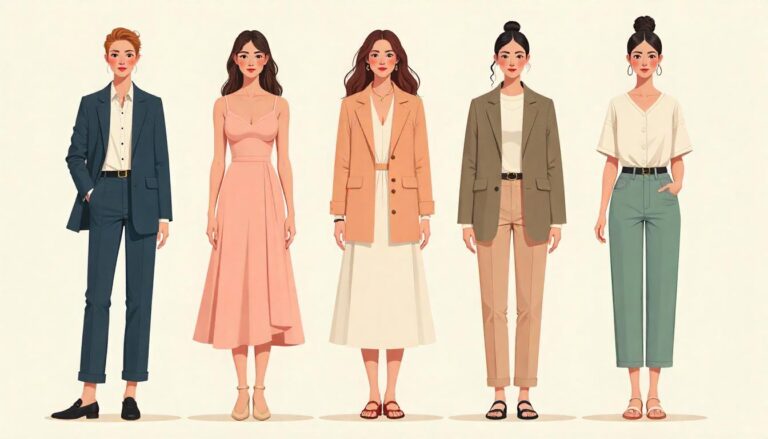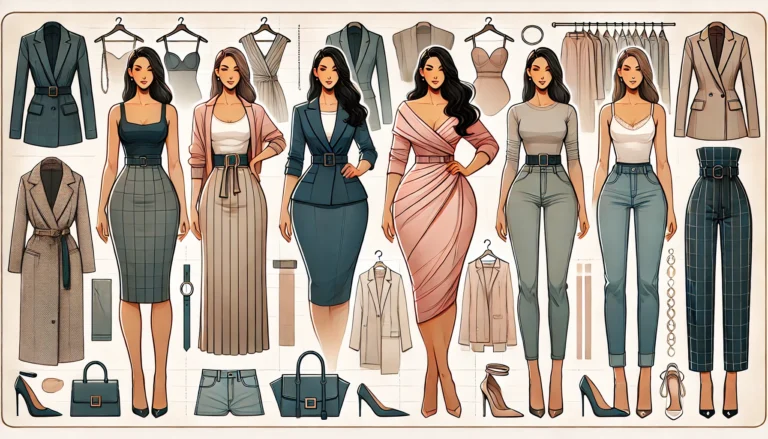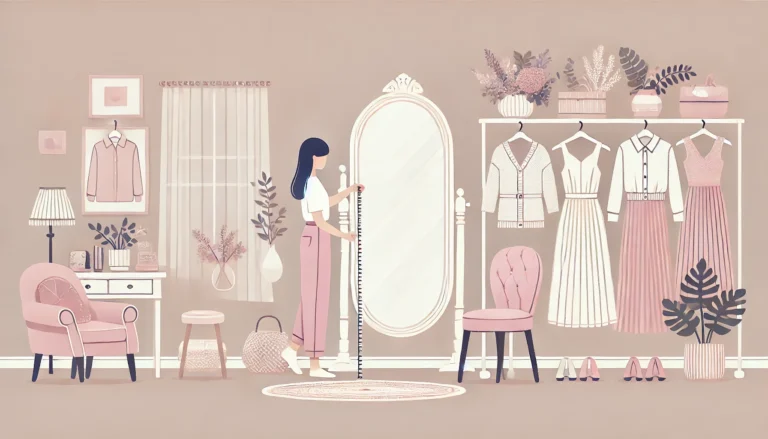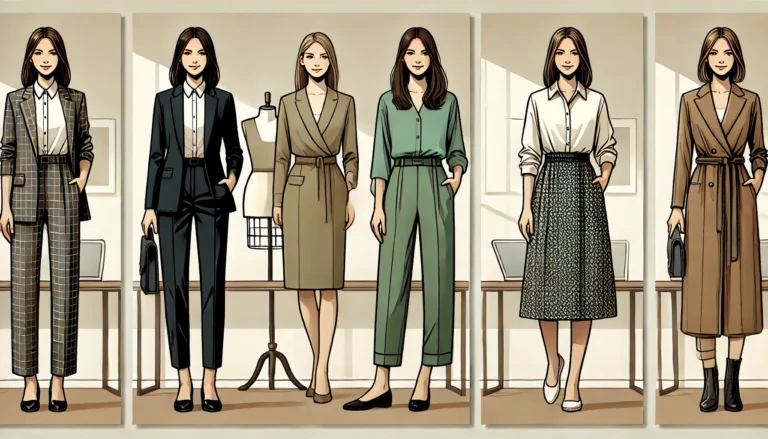Sustainable Fashion Trends: A Stylish Future for All
The fashion industry has long been criticized for its environmental impact, from pollution to waste, and its often exploitative labor practices. Fast fashion, in particular, emerged as a major culprit, offering low-cost, trendy clothes at the expense of environmental and social ethics. The pain of these practices has become increasingly evident, with overflowing landfills and reports of poor working conditions in garment factories. Consumers are growing more conscious of these issues, demanding change and accountability from the brands they support.
The goal is clear: to create a fashion industry that respects both people and the planet. This requires a shift towards sustainable practices that consider the entire lifecycle of a garment, from design to disposal. Innovations in fabric technology, local production, and ethical sourcing are paving the way for a more sustainable future. As the industry evolves, it is crucial that these changes not only reduce harm but also inspire a new era of creativity and style.
In this article, we will explore the sustainable fashion trends that are shaping the future of style. From eco-friendly materials to circular fashion, these trends reflect a growing commitment to sustainability and innovation. Whether you’re a fashion enthusiast or a conscious consumer, these trends offer exciting possibilities for a more responsible and stylish wardrobe.
Eco-Friendly Materials: A New Fabric of Fashion
One of the most significant trends in sustainable fashion is the use of eco-friendly materials. Traditional textiles like cotton and polyester are notorious for their environmental impact, requiring large amounts of water, pesticides, and energy. In response, designers and manufacturers are turning to more sustainable alternatives. Organic cotton, hemp, and bamboo are gaining popularity due to their lower environmental footprint. These materials use fewer resources and are often grown without harmful chemicals, making them a healthier choice for the planet and the people producing them.
Additionally, innovative materials like Tencel and Piñatex are making waves in the industry. Tencel, made from sustainably sourced wood pulp, is known for its softness and breathability, while Piñatex, derived from pineapple leaves, offers a cruelty-free alternative to leather. These innovations highlight the potential for sustainable materials to not only reduce harm but also enhance the functionality and aesthetic of fashion products.
Slow Fashion: Quality Over Quantity
Slow fashion is another vital trend reshaping the industry. Unlike fast fashion, which emphasizes rapid production and consumption, slow fashion prioritizes quality, longevity, and thoughtful design. This approach encourages consumers to invest in fewer, higher-quality pieces that will last for years, reducing the overall demand for new clothing. Brands embracing slow fashion often focus on craftsmanship, using skilled artisans and traditional techniques to create timeless garments.
The slow fashion movement also advocates for more transparent supply chains, ensuring that workers are paid fair wages and treated ethically. By choosing slow fashion, consumers can support brands that prioritize sustainability and social responsibility, contributing to a more equitable and environmentally friendly industry.
Circular Fashion: Closing the Loop
Circular fashion is an emerging trend that aims to eliminate waste by keeping garments in use for as long as possible. This concept is based on the principles of the circular economy, where products are designed to be reused, repaired, or recycled, rather than discarded. Circular fashion encourages brands to consider the entire lifecycle of their products, from design to end-of-life disposal.
Initiatives like clothing rental services, resale platforms, and take-back programs are gaining traction as part of this movement. These services give consumers access to high-quality fashion without the environmental cost of constant new production. By participating in the circular fashion economy, consumers can help reduce waste and extend the life of their clothing, contributing to a more sustainable fashion ecosystem.
Technological Innovations: Smart and Sustainable
Technology is playing a crucial role in driving sustainability in fashion. From 3D printing to AI-driven design, technological innovations are helping brands reduce waste, optimize resources, and create more sustainable products. 3D printing, for example, allows designers to create garments with minimal material waste, while AI can analyze consumer data to predict trends and reduce overproduction.
Furthermore, advancements in digital fashion are opening up new possibilities for sustainable style. Virtual fashion shows and digital clothing offer a platform for creativity without the environmental impact of physical production. As technology continues to evolve, it has the potential to revolutionize the way we think about fashion and sustainability.
Local and Ethical Production: Supporting Communities
Another important aspect of sustainable fashion is the shift towards local and ethical production. By producing garments locally, brands can reduce their carbon footprint and support regional economies. This approach also allows for greater transparency and accountability in the supply chain, ensuring that workers are treated fairly and paid living wages.
Ethical production goes hand in hand with supporting traditional craftsmanship and preserving cultural heritage. Many sustainable brands collaborate with artisans from around the world, creating unique pieces that honor traditional techniques while providing economic opportunities for local communities. This emphasis on ethical and local production not only benefits the environment but also promotes social sustainability and cultural appreciation.
Empowered Consumers: Driving Change through Choices
Ultimately, the future of sustainable fashion is in the hands of consumers. As awareness of environmental and social issues grows, consumers are increasingly demanding transparency and accountability from the brands they support. By choosing sustainable products and supporting ethical brands, consumers can drive change and encourage the industry to adopt more responsible practices.
Empowered consumers are also turning to community-driven initiatives like clothing swaps, DIY fashion, and upcycling to reduce waste and promote sustainable style. These grassroots movements highlight the power of individual actions in creating a more sustainable and equitable fashion industry. As consumers continue to push for change, the future of fashion looks increasingly bright and sustainable.
